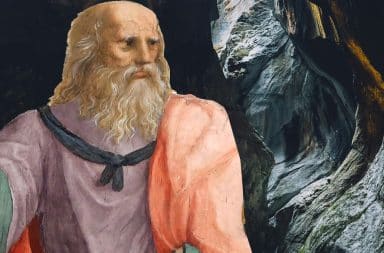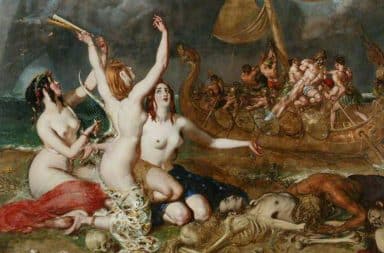Often touted as the first great American Yelp Review, Hemingway’s The Sun Also Rises is a powerful portrayal of one man’s quest to eat a bunch of meals and drink a shit ton of wine amidst the occasional bullfight.
Here we dissect some key passages.
After the coffee and a fine, we got the bill, chalked up the same as ever on a slate, that was doubtless one of the “quaint” features, paid it, shook hands, and went out.
In this vivid description, Hemingway explores the theme of money, specifically how it pertains to the transference of food and drink from an establishment to the individual. The image of the chalkboard slate here is meant to signify… well, listen, the important thing is that he paid his bill ok?
We ate dinner at Madame Lecomte’s restaurant on the far side of the island. It was crowded with Americans and we had to stand up and wait for a place. Some one had put it in the American Women’s club list as a quaint restaurant on the Paris quail as yet untouched by Americans, so we had to wait forty-five minutes for a table. Bill had eaten at the restaurant in 1918, and right after the armistice, and Madame Lecomte made a great fuss over seeing him.
In this section, Hemingway warns the reader about the societal repercussions of a positive review: a 45-minute wait! Can you believe it? Even with a connection, he was shit out of luck.
The whiskeys were twelve francs apiece…In a room off the bar there was a good jazz band playing. It was a pleasant bar. We had another round.
In one of his more difficult passages, Hemingway suggests that the combination of alcohol and music can result in a fine evening.
I went in and ate dinner. It was a big meal for France but it seemed carefully apportioned after Spain. I drank a bottle of wine for company. It was a Chateau Margaux. It was pleasant to be drinking slowly and to be tasting the wine and to be drinking alone. A bottle of wine was good company. Afterward I had coffee. The waiter recommended a Basque liquor called Izarra. He brought in the bottle and poured a liqueur-glass full. He said Izarra was a flower of the Pyrenees. The veritable flowers of the Pyreness. It looked like hair-oil and smelled like Italian Strega. I told him to take the flowers of the Pyrenees away and bring me a vieux marc. The marc was good. I had a second marc after the coffee.
A classic example of Hemingway’s use of allegory with the… gah bah bllooo blurrggdd…
Edit: Sorry, I was trying to match the protagonist bottle for bottle, and got completely sloshed. Note also his mentioning of an additional two Marcs after dinner, clearly foreshadowing a nasty hangover for us both.
The waiter seemed a little offended about the flowers of the Pyrenees, so I overtipped him. That made him happy. It felt comfortable to be in a country where it is so simple to make people happy. You can never tell when a Spanish waiter will thank you. Everything is on such a clear financial basis in France. It is the simplest country to live in. No one makes things complicated by becoming your friend for any obscure reason. If you want people to like you you only have to spend a little money. I spent a little money and the waiter liked me. He appreciated my valuable qualities. He would be glad to see me back. I would dine there again some time and he would be glad to see me, and would want me at his table. It would be a sincere liking because it would have sound basis. I was back in France.
In a passage considered controversial at the time, Hemingway intimates that tipping above the recommended 20% will invite favorable service on a future visit. Maybe even an order of snails on the house.
It was a nice hotel and the people at the desk were very cheerful, and we each had a good small room.
Long debated among scholars, this chapter ending is variously interpreted as Hemingway’s customer service manual and as the inspiration for La Quinta Inn and Suites.
Study Guide:
- Why does Hemingway introduce the purchasing of multiple bottles of wine as a major plot device in Chapter 1? And then again in Chapter 2? And also Chapters 3, 4, and 5. Let’s revise this question actually: Is there a chapter where he does not talk about guzzling four to five bottles of wine in a sitting and if so, please show it to us?
- Follow up question: How is the protagonist able to walk about town without a stadium pal/adult diaper?
- Why is service with a smile so important to Hemingway?
- Why has the author chosen the medium of a novel rather than say, TripAdvisor?
- One of Hemingway’s symbolic characters is that of the regular customer. Why does he sometimes just want to go where everybody knows his name?
- How does the author’s examination of the 45-minute wait at Madame Lecomte factor into your decision to wait in line two hours for pancakes?
- Why does the author tell us everything about the service, food quality, and patronage but no addresses or opening hours?


